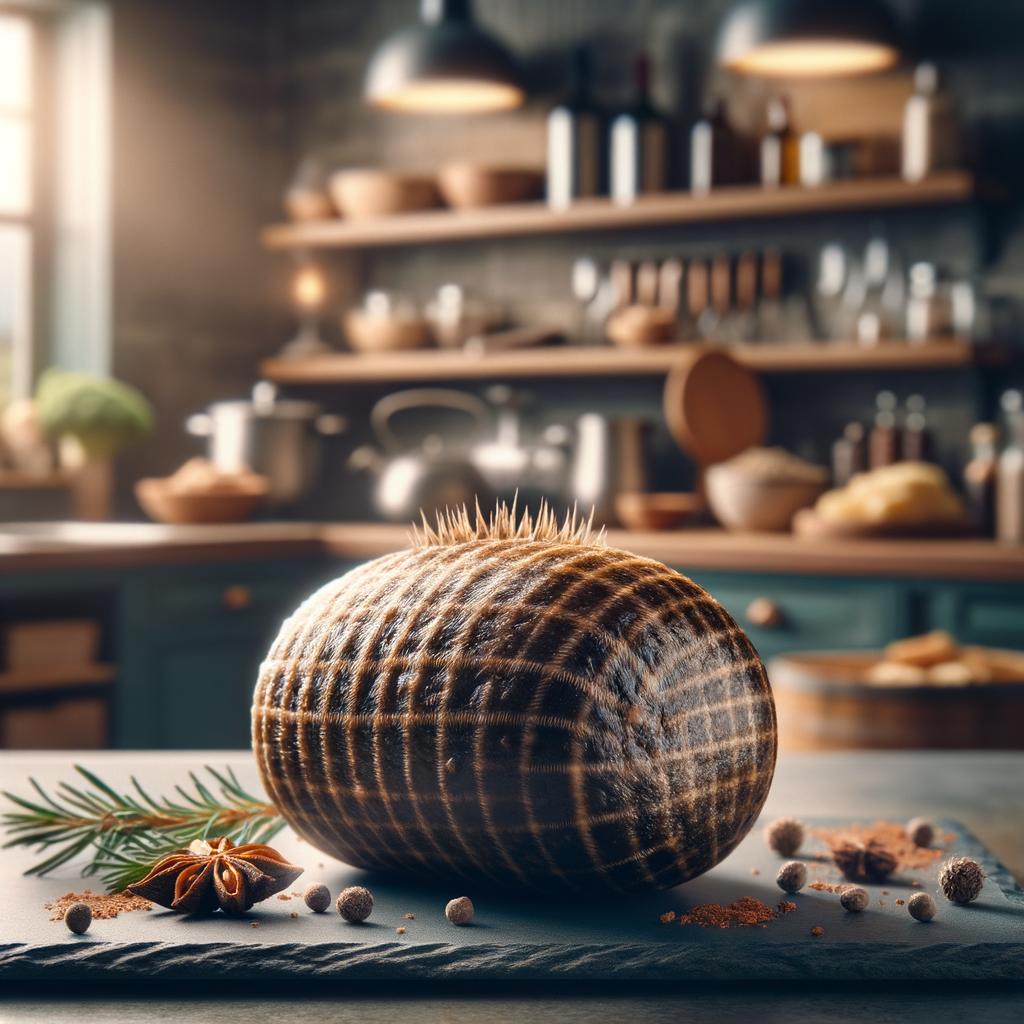Haggis

Description Haggis, the national dish of Scotland, is a savory pudding that encapsulates the hearty and rustic charm of Scottish cuisine. Traditionally, it is made from a sheep's 'pluck' - a term that refers to the heart, liver, and lungs. These are minced together with onion, oatmeal, suet, spices, and salt before being encased in the animal's stomach. The result is a rich and flavorful dish, with a crumbly texture and a unique, earthy taste that is both robust and nuanced. Its appearance is similar to a large stuffed sausage, but with a character all its own. The unique preparation and ingredients set haggis apart from other dishes, making it a symbol of Scottish culinary tradition.
Primary Uses Haggis is traditionally served as the centerpiece of a Burns Supper, an annual celebration of the Scottish poet Robert Burns. It is also a common dish on St. Andrew's Day, Scotland's national day. Haggis can be enjoyed in a variety of ways - it can be served with 'neeps and tatties' (turnips and potatoes), used as a stuffing for poultry, or even deep-fried in batter as a modern Scottish delicacy. Outside of the culinary world, haggis has a significant cultural role in Scotland, often being associated with national pride and identity.
History The origins of haggis are steeped in the mists of time. While it is often associated with Scotland, a form of haggis was mentioned in Homer's Odyssey, suggesting that the dish could be thousands of years old. In Scotland, haggis was a practical dish, created to utilize every part of the animal during harsh winters. Over time, it has evolved from a humble peasant dish to a symbol of Scottish culture and hospitality. A popular myth is that the haggis is a small creature native to the Scottish highlands, a tale often told to unsuspecting tourists.
Nutritional Information Haggis is a nutrient-dense food. It is rich in protein and iron thanks to the organ meats, and the oatmeal provides fiber and carbohydrates. However, it is also high in fat and should be eaten in moderation as part of a balanced diet. Compared to other offal-based dishes, haggis has a higher carbohydrate content due to the inclusion of oatmeal. Despite its hearty nature, haggis tells a story of survival, adaptation, and national pride, making it a dish that nourishes both the body and the spirit.

